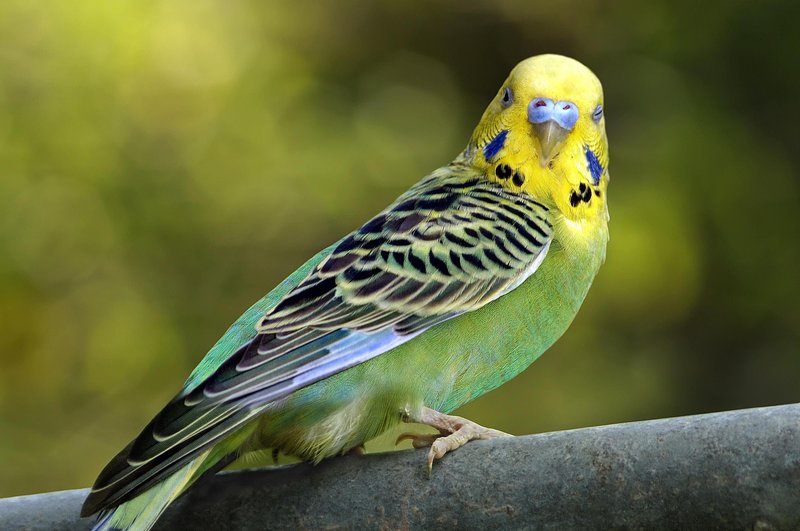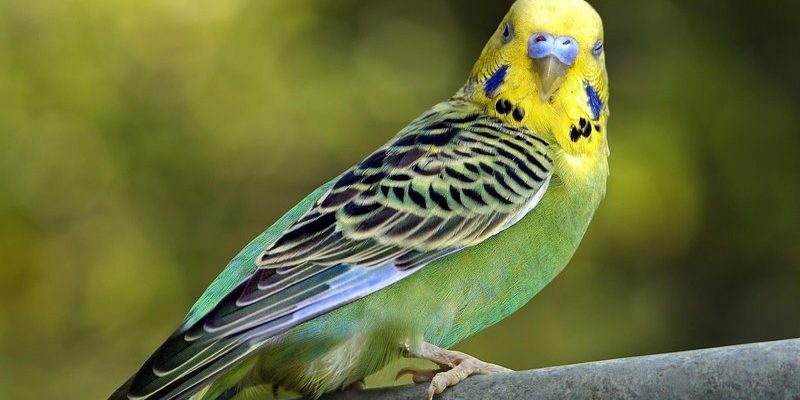
You might be wondering how these charming birds go from chirpy singles to committed parents. The process involves several stages, from courtship to raising chicks. Throughout this journey, they exhibit various behaviors that are both entertaining and educational. By the end of this article, you’ll have a solid grasp of their nesting habits and lifecycle, giving you a deeper appreciation for your feathered friends.
Understanding Budgie Nesting Habits
Budgies are naturally inclined to nest in the wild, seeking cozy nooks in trees or hidden spots. In captivity, they often adapt by finding a suitable place in their cage. Typically, a budgie’s nesting box becomes their personal sanctuary. But what’s interesting is how they select their nesting spots. They look for places that feel secure and private, so think of it like finding the perfect spot under a blanket fort!
When a female budgie is ready to nest, she will often show signs like increased vocalization and a restless nature. If you observe your budgie arranging materials, that’s a clear signal. They might use everything from shredded paper to small twigs or even bits of fabric. It’s their way of creating a comfy environment, showing just how resourceful they can be. Honestly, it’s quite impressive how much thought goes into their little homes!
Once the nest is prepared, the bonding between male and female budgies can deepen. During this time, you might notice them preening each other or engaging in gentle courtship behaviors—like feeding each other. This is essential for strengthening their pair bond, which is crucial for raising their future chicks. The process of nesting is much more than just laying eggs; it’s a full journey of building a home and a partnership.
The Role of Courtship in Nesting
Courtship is a vital step before nesting. After all, you wouldn’t start a family without getting to know your partner a bit better, right? Budgies have their unique ways of flirting, and it often starts with the male showing off his vibrant colors and vocal abilities. He’ll do a little dance, puffing up his feathers and making cheerful sounds. This is not just for show; it’s about attracting the female’s attention.
You might also see the male feeding the female, which is a sign of affection. This behavior goes beyond romance; it’s about demonstrating that he’ll be a supportive partner. The female, in turn, will indicate her readiness by responding positively to his moves. If you notice your budgies engaging in these behaviors, they’re likely on the path to nesting!
Once they’ve successfully bonded, the real excitement begins. The female will seek the nest box, and the duo will start prepping their nesting site. This stage can be thrilling to witness, as you see their personalities shine through. Each step they take builds anticipation for what’s to come in their lives.
Egg Laying and Incubation
After establishing their nesting site, the female will start laying eggs. Typically, a budgie will lay a clutch of around four to six eggs. These eggs are usually laid a day or two apart, and you might find it fascinating how predictable this cycle can be. The color of the eggs can vary from white to pale blue, which adds a nice touch to their nesting experience.
Once the last egg is laid, incubation begins. The female will be diligent about keeping her eggs warm and safe, and you might notice her spending a lot more time in the nesting box. The male will often help by bringing her food and keeping her company. This teamwork is essential; it shows that both parents are dedicated to ensuring a healthy start for their chicks.
Incubation typically lasts about 18 days, but it can vary slightly. During this time, the eggs are vulnerable. If you have a budgie pair, it’s essential to give them privacy. Too much disturbance can stress them out. So, think of it like a cozy movie night; sometimes, it’s best to let the film play without interruption.
Chick Hatching and Early Development
As the hatch day approaches, you might notice some activity in the eggs. It’s intriguing to think about the tiny chicks preparing to break free from their shells! Once the eggs hatch, the chicks are born blind and helpless. They rely entirely on their parents for warmth and food. It’s an incredible sight to see them snuggling together, creating a little bundle of warmth and safety.
The parents are quite busy during this time. The male will gather food and bring it back to the nest, while the female tends to the chicks. She’ll feed them a special regurgitated formula that’s rich in nutrients. It’s like a homemade smoothie made just for the little ones! This nurturing phase is crucial for their growth. Chicks will begin to open their eyes and develop feathers around two weeks post-hatch.
In the following weeks, you’ll see them grow rapidly. They’ll start to venture out of the nest, and their playful personalities will start to emerge. Witnessing this transformation can be joyful; it’s almost like watching a mini reality show unfold right in your home. Imagine the excitement as they stretch their wings for the first time!
The Process of Weaning and Independence
As the chicks continue to grow, they begin the weaning process. This is when they start transitioning from their parents’ food to solid foods. The parents will gradually encourage this by offering seeds, fruits, and vegetables. During this phase, the chicks might experiment with different foods, much like a child trying various flavors for the first time!
By around 6 weeks old, the chicks will start to leave the nest more frequently. It’s a big step toward independence, and you’ll see them testing their wings. They might wobble around at first, but that’s all part of their learning process. As they gain confidence, they’ll often mimic their parents, practicing their flying and chirping skills.
This phase is also when you can start to train them. Engage with them gently. Spending time with the young budgies can help them become social and friendly. They’ll be more likely to bond with you as they grow, which can bring a delightful connection to your home.
Preparing for the Next Generation
Once the chicks have left the nest, the cycle begins again. Budgies are known for their strong reproductive instincts, and it won’t be long before the parents are ready to mate again. You might see the same courtship behaviors repeated, and soon, they could be setting up their nesting site once more. It’s a beautiful, albeit relentless, cycle of life.
As a budgie owner, understanding this lifecycle is essential. It helps you provide the right environment, especially during nesting. By recognizing how to support them, you create a more enriching experience for both you and your birds. Plus, watching this entire process can deepen your connection to these vibrant creatures.
In the end, budgie nesting habits and lifecycle stages are filled with natural wonders and surprises. Knowing what to expect can make your experience as a budgie owner immensely rewarding. So, whether you’re thinking of breeding or simply want to observe this fascinating journey, you’re now equipped with the knowledge to appreciate every chirp and flutter!
In conclusion, being knowledge about your budgie’s nesting habits and lifecycle not only enriches your experience but also enhances the lives of your feathered friends. By giving them the right care and environment, you can help them thrive and enjoy the beauty of their natural instincts right in your home.

